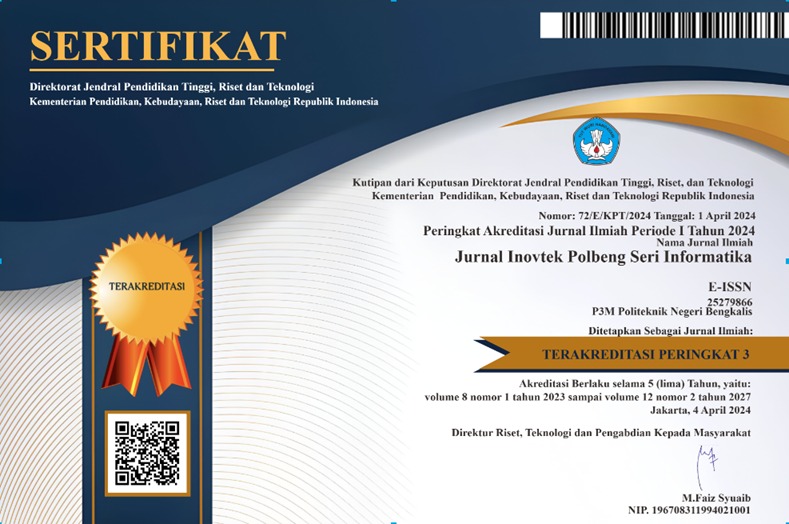Rainfall Prediction using the SARIMAX and LSTM Methods in Semarang City
DOI:
https://doi.org/10.35314/6sg7m889Keywords:
LSTM, SARIMAX, Rainfall, MAE, RMSEAbstract
The purpose of this study is to predict the decade rainfall in Semarang City using two main methods, namely Seasonal Autoregressive Integrated Moving Average with Exogenous Variables (SARIMAX) and Long Short Term Memory (LSTM). The methodology of this study begins with data preprocessing, which includes data deletion analysis using dropna and data normalization using Min-Max Scaling to reduce the scale to between 0 and 1. The dataset is then divided into 80% training data and 20% test data. The validity of the data (X_test, Y_test) using the best 56-epoch data validation (val_loss) is better than the validity of the training data (loss). On the other hand, SARIMAX uses the (2,1,2), (2,1,2,36) model, and its validation techniques include Mean Absolute Error (MAE), Root Mean Square Error (RMSE), and Coefficient of Determination (R2). Specifically, the RMSE of the LSTM model is 19.6, and the RMSE of the SARIMAX is 31.05. The MAE of LSTM is 15.0, SARIMAX is 24.5, the R2 of LSTM is 0.814, and SARIMAX is 0.52. Lower RMSE and MAE values indicate lower prediction errors, but a higher R2 value of 1 indicates that LSTM can explain 81% of the actual data variation, which is better than SARIMAX, which is only about 52%. The main finding of this study is that the LSTM model performs better when recommending rainfall datasets.
Downloads
Downloads
Published
Issue
Section
License
Copyright (c) 2025 INOVTEK Polbeng - Seri Informatika

This work is licensed under a Creative Commons Attribution-NonCommercial-ShareAlike 4.0 International License.














